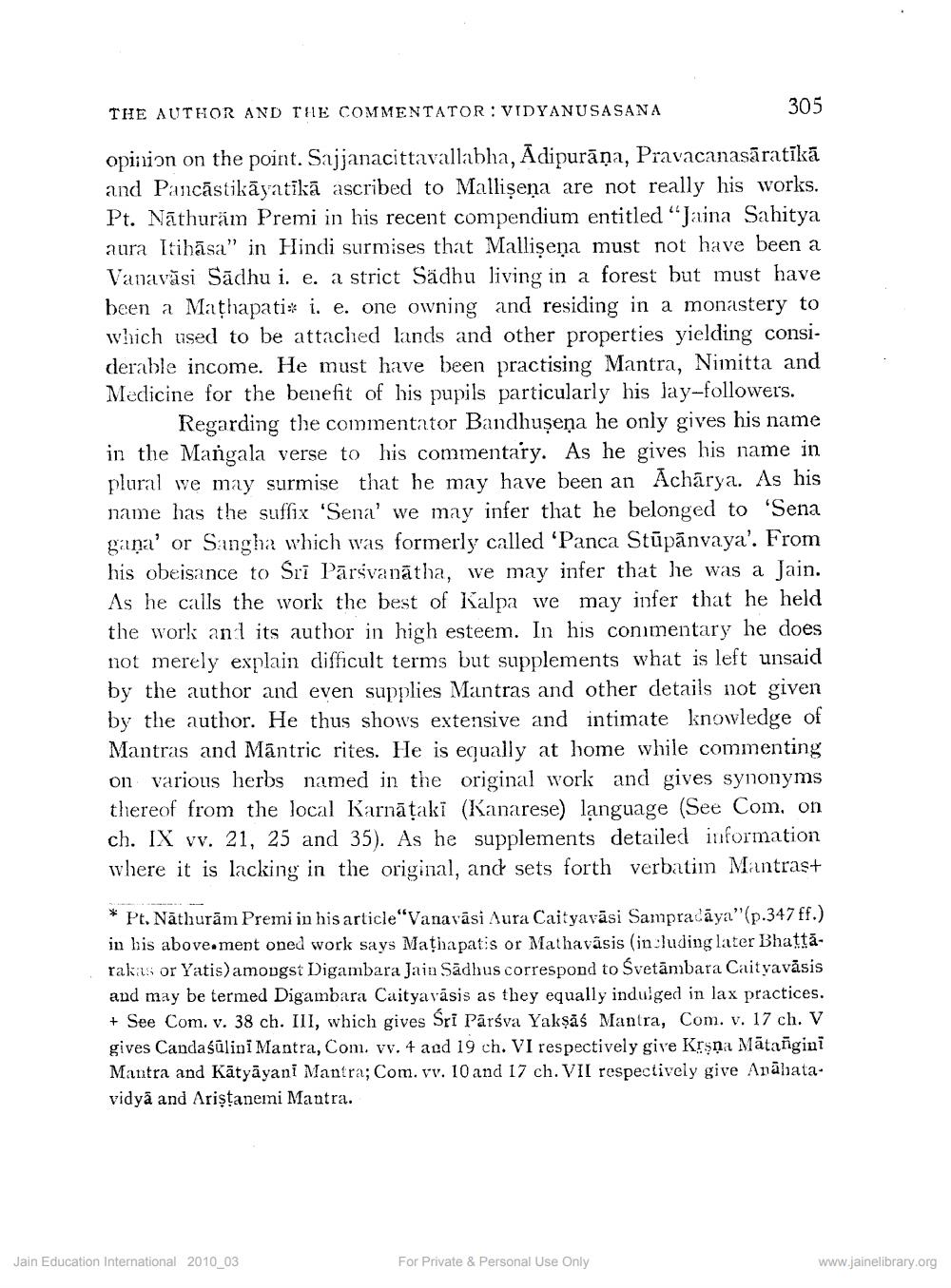________________
THE AUTHOR AND THE COMMENTATOR: VIDYANUSASANA
305
opinion on the point. Sajjanacittavallabha, Adipurāna, Pravacanasāratikā and Pancāstikāyatīkā ascribed to Mallisena are not really his works. Pt. Nāthuräm Premi in his recent compendium entitled “Jaina Sahitya aura Itibāsa" in Hindi surmises that Mallisena must not have been a Vanavāsi Sādhu i. e. a strict Sädhu living in a forest but must have been a Mathapati* i. e. one owning and residing in a monastery to which used to be attached lands and other properties yielding considerable income. He must have been practising Mantra, Nimitta and Medicine for the benefit of his pupils particularly his lay-followers.
Regarding the commentator Bandhușeņa he only gives his name in the Mangala verse to his commentary. As he gives his name in plural we may surmise that he may have been an Acharya. As his name has the suffix 'Sena' we may infer that he belonged to 'Sena gana' or Sangha which was formerly called 'Panca Stūpānvaya'. From his obeisance to Sri Pārsvanātha, we may infer that he was a Jain. As he calls the work the best of Kalpa we may infer that he held the work and its author in high esteem. In his commentary he does not merely explain difficult terms but supplements what is left unsaid by the author and even supplies Mantras and other details not given by the author. He thus shows extensive and intimate knowledge of Mantras and Mantric rites. He is equally at home while commenting on various herbs named in the original work and gives synonyms thereof from the local Karnātaki (Kanarese) language (See Com, on ch. IX vv. 21, 25 and 35). As he supplements detailed information where it is lacking in the original, and sets forth verbatim Mantras+
* Pt. Nathurām Premi in his article"Vanavāsi Aura Caityavāsi Sampradāya"(p.347 ff.) in his above.ment oned work says Maţia patis or Mathavasis (including later Bhattārakas or Yatis) amongst Digambara Jain Sadhus correspond to Śwetāmbara Caityavāsis and may be termed Digambara Caityavāsis as they equally indulged in lax practices. + See Com. v. 38 ch. III, which gives Sri Pārsva Yakşaś Mantra, Com. v. 17 ch. V gives Candasūlini Mantra, Com. vv. + acd 19 ch. VI respectively give Krşņa Mātañgini Mantra and Kätyāyani Mantra; Com. vv. 10 and 17 ch. VII respectively give Anābata. vidyā and Aristanemi Mantra.
Jain Education International 2010_03
For Private & Personal Use Only
www.jainelibrary.org




